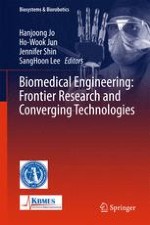2016 | OriginalPaper | Buchkapitel
Cellular Interactions with Self-assembled Biomaterials and Composites for Bone Tissue Engineering
verfasst von : Jeremy B. Vines, Grant C. Alexander, Lily Deng, Patrick T J Hwang, Dhruv Patel, Ho-Wook Jun
Erschienen in: Biomedical Engineering: Frontier Research and Converging Technologies
Aktivieren Sie unsere intelligente Suche, um passende Fachinhalte oder Patente zu finden.
Wählen Sie Textabschnitte aus um mit Künstlicher Intelligenz passenden Patente zu finden. powered by
Markieren Sie Textabschnitte, um KI-gestützt weitere passende Inhalte zu finden. powered by
Bone is an extremely important tissue with great versatility that provides support, movement, and protection for the organs of the body. Various bone related pathologies such as osteoporosis have the potential to create large defects that do not have the capability to heal with only basic clinical intervention. In these circumstances, the principles of tissue engineering are utilized in order to provide additional material to either replace or repair the damaged bone regions. Tissue engineering involves the utilization of various combinations of growth factors, cells, and biomaterials to recreate organs or lost tissue regions. Currently, the most prominent materials for this purpose are limited by issues such as availability for autografts, possible antigenicity for allografts, or insufficient of bioactivity as is the case with many synthetic materials. To address these concerns, research has shifted focus towards development of synthetic materials that faithfully mimic native bone’s natural structure and function. Bone formation and regeneration are dependent upon the dynamic interactions between bone cells and extracellular matrix components. Therefore, it is important that the native extracellular matrix components are recapitulated to the greatest extent possible. Specifically, this new paradigm shift requires the development of scaffolds that recreate both the structural and functional qualities of bone tissue. These materials are intended to enhance the interactions of bone forming cells and biomaterials. Adopting this strategy, many groups have developed self-assembling materials to serve as functionalized scaffolds for enhancing the dynamic interactions between the bone cells and the biomaterials for subsequent bone tissue regeneration. In this chapter, the underlying principles of bone tissue engineering, bone cell interactions, various bioactive, self-assembling biomaterial technologies, and the means by which they improve interactions with bone forming cells are discussed.
